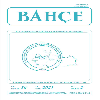Trakya' da alabaş (Brassica oleraceae var. gongylodes L.) yetiştirme olanağı ve uygun çeşitlerin belirlenmesi
Çalışma, Trakya koşullarında alabaş yetiştirme olasılığını ve uygun çeşitleri belirlemek amacıyla 2000 ile 2002 yıllan arasında ilkbahar ve sonbahar yetiştirme döneminde yürütülmüştür. Her bir dönemde dokuz alabaş çeşidi verim ve bazı yumru ve yaprak özellikleri bakımından değerlendirilmiştir. Trakya koşullarında alabaşın başarılı bir şekilde yetiştirilebileceği belirlenmiştir. En yüksek yaprak ağırlığı Erko'dan elde edilirken, yıl ve döneme bağlı olarak 471.4 ile 986.0 g arası bitki ağırlığı, 340,2 ile 899.9 g arası yumru ağırlığı, 87.3 ile 125.2 mm arası yumru çapı ve 7.72 ile 20.7 kg parsel verimi ile Rapidstar en uygun çeşit olarak belirlenmiştir.
Determination on suitable varieties and the possibility of kohlrabi (Brassica oleraceae var. gongylodes L.) growing in Trakya(Thrace) Region
A study was carried out to investigate the possibility of kohlrabi growing and to determine the suitable cultivars under Trakya conditions during the spring and autumn growing periods between 2000 and 2002. In each period, nine kohlrabi cultivars were evaluated with respect to yield and some tuber and leaf characteristics. It was observed that kohlrabi can be successfully grown under Trakya conditions. While the highest leaf weight was obtained from Erko, the variety Rapidstar which had plant weight between 471.4 and 986.0 g, tuber weight between 340.2 and 899.9 g, tuber diameter between 87.3 and 125.2 mm and yield between 7.72 and 20.07 kg/plot, as depending on different year and season was the best suitable cultivar for the Region.
___
- 1. Anonymous, 2000a. FAOSTAT. Statistics database. (http://apps.fao.org).
- 2. __________, 2000b. Agriculture Structure and Production. State Institute of Statistics. Prime Ministry Republic of Turkey, Ankara (http://www.die.gov.tr).
- 3. Dunbar, R., 1998. Bizarre Brassicas. Garden 123 (3): 191-193.
- 4. Glukhov, O. Z., 1973. Chemical Composition of Kohlrabi and Fodder Carrots. Introduktsiya ta Eksperim Ekol Raslin Vppusk-2: 122-123.
- 5. Haupt, G., 1986. New Vegetables for Greenhouse Cultivation in Winter Kohlrabi. Gartner Tidende 102 (48): 1611-1613.
- 6. Krug, H., 1991. Gemüseproduktion. 2. Auflage. Verlag Paul Parey, Berlin und Hamburg.
- 7. Liebster, G., 1991. Warenkunde, Gemüse. 2. Auflage. Morion Verlagproduktion, Düsseldorf.
- 8. Mehwald, J., 1976. Suitable of Blue Kohlrabi Cultivars for Summer Cultivation. Gemüse 12: 168-170.
- 9. _________, 1984. Hope for the Kohlrabi Grower-New Early Cultivars. Gemüse 20 (2): 40-43.
- 10. Splittstoesser, W. E., 1990. Vegetable Growing Handbook. 3rd ed. Van Nostrand Reinhold, New York.
- 11. Sritharan, R. and F. Lenz, 1992. Effect of Light Regime on Growth, Carbonhydrates and Nitrate Concentration in Kohlrabi (Brassica oleraceae var. gongylodes L.). Angew. Bot. 66: 130-134.
- 12. _______, H. Caspari and F. Lenz, 1992. Influence of CO2 Enrichment and Phosphorus Supply on Growth, Carbonhydrates and Nitrate Utilization of Kohlrabi Plants. Gartenbauwissenschaft 57 (5): 246-251.
- 13. Uffelen, J., M. Jong, P. Dijk, J. Van Uffelen, M. De Jong and P. Van Dijk, 1989. Kohlrabi. Cultivars for Warm-air Culture. Splitting of the Tuber Makes Choice Difficult. Groenten en Fruit 45 (22): 44-45.
- 14. Vanparijs, L., 1988. Judicious Choice of Cultivar with Kohlrabi. Boer en de Tuinder 94 (1): 14.
- 15. ___________., 1996. Choice of Cultivar with Kohlrabi. Mededeling Provinciaal Onderzoek en Voorlichtingscentrum voor Land en Tuinbouw, Beitem Roeselare No. 373, p. 4 .
- 16. _________, 1999. Kohlrabi. Cultivation of Kohlrabi for Industrial Processing: Tree Cultivars Take the Lead. Proeftuinnieuws 9: 38-39.
- 17. Vural, H., D. Eşiyok ve İ. Duman, 2000. Kültür Sebzeleri. Ege Üniversitesi Bası- mevi, Bornova, İzmir.
- ISSN: 1300-8943
- Yayın Aralığı: Yılda 2 Sayı
- Başlangıç: 1968
- Yayıncı: Atatürk Bahçe Kültürleri Merkez Araştırma Enstitüsü
Sayıdaki Diğer Makaleler
Ü. Gülsüm ERDOĞAN, İbrahim BOLAT
Bazı çilek çeşitlerinin ısparta koşullarında adaptasyonu
Kahraman KEPENEK, M. Ali KOYUNCU, Fatma KOYUNCU
Antalya İlinde Serada Sebze Üretiminde Pestisit Kullanımının Ekonomik Açıdan Değerlendirilmesi
Burhan ÖZKAN, Süleyman KARAMAN, Vuruş Handan AKÇAÖZ, Yavuz TAŞCIOĞLU
Van yöresinde yetiştirilen "Mellaki"armut çeşidinin beslenme durumunun saptanması
Şefik TÜFENKÇİ, Şafak CEYLAN, İlhan KARAÇAL
Bazı Yabani Meyve Türlerinin Besin Değerlerinin Belirlenmesi Üzerinde Bir Araştırma
Hatay Koşullarında Yetiştirilen Çileklerde Yaz Dikim Zamanlarının Belirlenmesi
